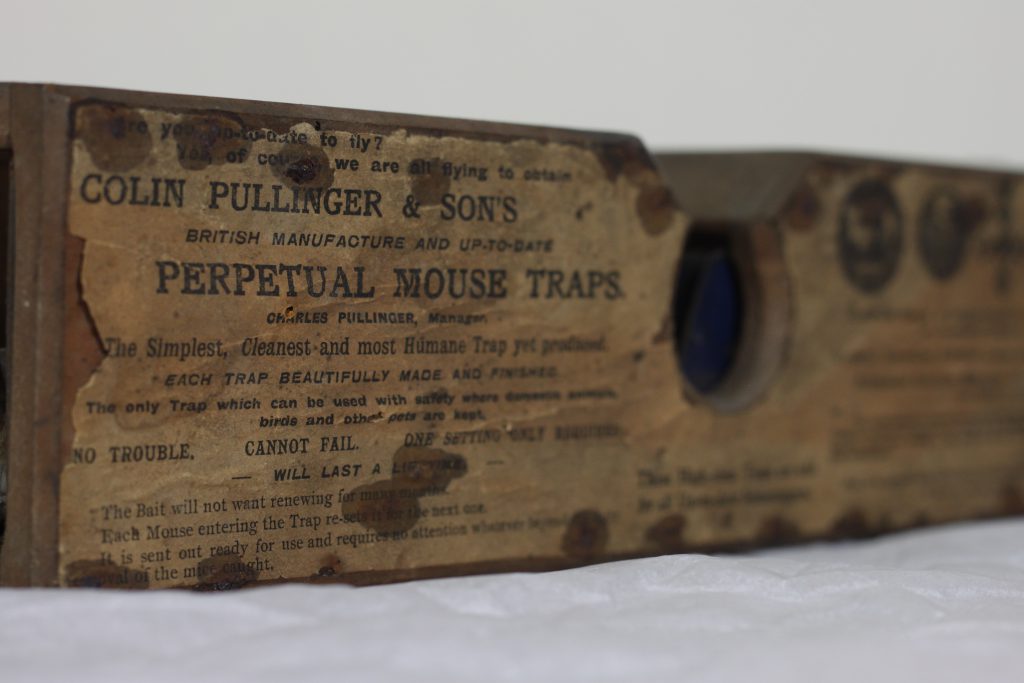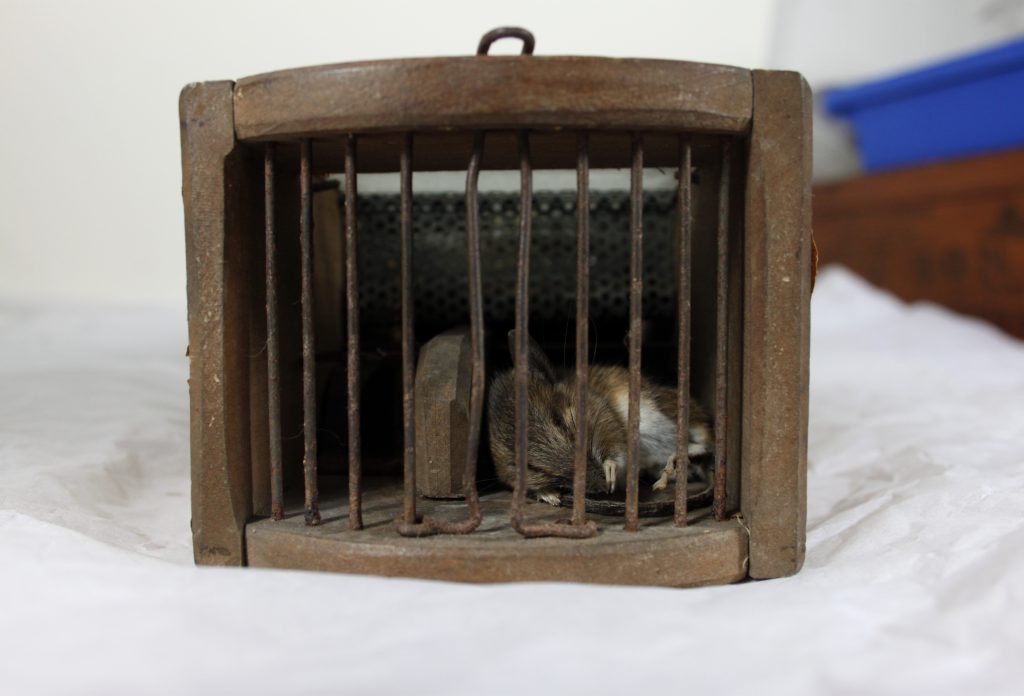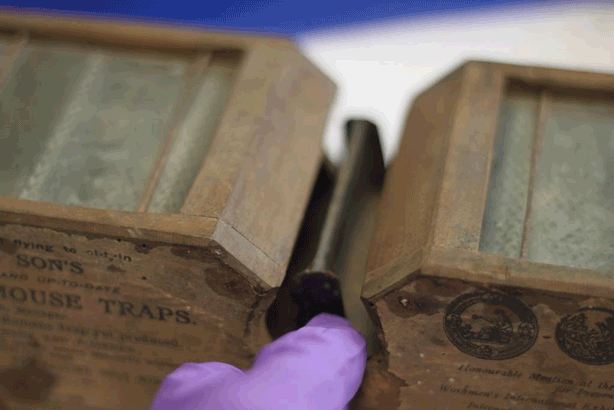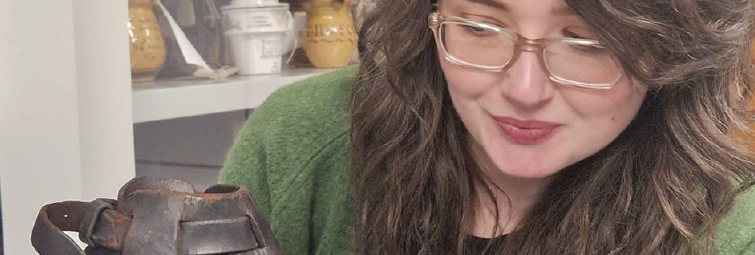155-year old mouse trap claims its latest victim
-
Author
- josefinabravo
-
Published Date
- February 3, 2016
After logging onto their computers today, staff here at the MERL were greeted by an unusual email from the Assistant Curator:
‘There appears to be a dead mouse in this mousetrap…’
It began.
‘…which is not described as being there on the database.’

So, this retired rodent had managed to sneak past University of Reading security, exterior doors and Museum staff, and clambered its way up into our Store. Upon finding itself there it would have found the promised land; a mouse paradise laid before it full of straw, wood and textiles. Then, out of thousands of objects, it chose for its home the very thing designed to kill it some 150 years ago: a mouse trap.
The trap itself was not baited, but this did not stop our mouse from wriggling inside and, finding itself trapped, meet its demise. The trap was manufactured by Colin Pullinger & Sons of Silsey, West Sussex and although we don’t know the exact date this one was made, the trap itself was patented in 1861. It is a multi-catch trap with a see-saw mechanism, and you can see its object record here. It is known as a ‘Perpetual Mouse Trap’ and proudly declares that it ‘will last a lifetime’. How apt.

Pests are, of course, a perpetual menace in any museum. Curators and conservators are always alert for the tell-tale signs of moths, beetles and rodents which feast on the organic materials we hold in store. Hygiene and regular cleaning are a first line of defence, as are glazed cases. Objects are also treated before storage or display to ensure anything lurking within is killed. And while our most vulnerable objects have always been cased – such as clothing and leather – the rest of our stored collection made of sturdier wood and metal was only fully glazed over last year. This mouse may have snuck into the trap before this glazing, or otherwise managed to get in while construction work has been carried out for the Museum’s redevelopment.

We have traps set for pests, but we can never catch everything all of the time. This mouse managed to sign its own death warrant before it could do any more damage, the extent of which was only a nibbled label. We will also have to determine whether this mouse was a scout or part of a larger family. Luckily, because the collection is heavily used it is often only a matter of time before any kind of infestation is noticed and nipped in the bud. This mouse was found when our Assistant Curator was in the Stores selecting objects for use in an interdisciplinary research session on the subject of ‘Animals at Reading’. Our current MERL Fellow, Professor Karen Sayer, is also particularly interested in traps as part of her ongoing research into rats and pest control and regularly views our collection.

For the moment, however, the mouse remains in the trap while we decide what to do with it. One option is a dignified burial, another is to desiccate it or have it prepared to remain as a permanent feature of the mouse trap for our new displays. We’ll let you know what we decide.





